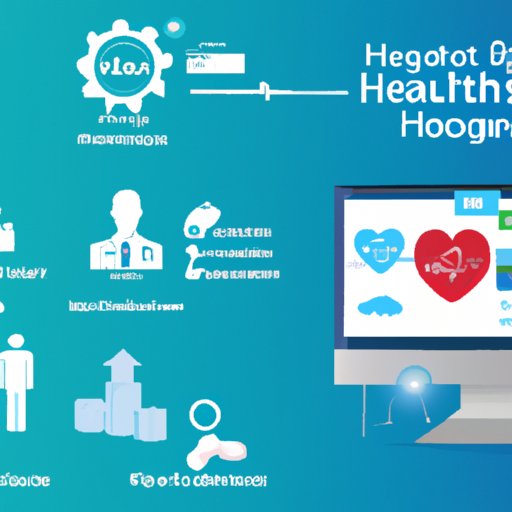Introduction
Health Information Technology (HIT) is a rapidly evolving field that has transformed the way healthcare providers deliver services. HIT enables providers to access, store, and manage patient data in an efficient and secure manner. By leveraging technology, providers are able to improve the accuracy and efficiency of medical services, resulting in improved financial outcomes for both patients and providers. In this article, we will explore the various benefits of HIT, including cost savings, quality of care, communication, patient engagement, public health initiatives, and streamlining payment processes.
Cost Savings of HIT
One of the primary benefits of HIT is the potential for cost savings. HIT can reduce administrative costs associated with managing patient records, as well as the cost of providing care. For example, electronic health records (EHRs) enable providers to quickly and easily access patient information, eliminating the need for time-consuming manual searches. Additionally, EHRs can help reduce errors in healthcare settings, leading to fewer costly mistakes.
Quality of Care
HIT also improves the quality of care by providing providers with access to more accurate and up-to-date information about their patients. By having timely access to patient data, providers can make more informed decisions about treatment options and better coordinate care. Additionally, HIT can reduce errors in healthcare settings, leading to improved patient outcomes.
Communication
HIT also facilitates better communication between providers and patients. By using electronic messaging systems, providers can communicate with patients in a more efficient and secure manner. Additionally, providers can use HIT to send reminders to patients regarding upcoming appointments or test results.
Increasing Patient Engagement
HIT can also help to increase patient engagement by involving patients in their own health care. Patients can use HIT to access their medical records and view their test results, as well as track their medications and treatments. Additionally, patients can use HIT to communicate with their providers, allowing them to be more actively engaged in their own health care.
Public Health Initiatives
HIT can also be used to support public health initiatives. For example, real-time data from EHRs can be used to monitor outbreaks of infectious diseases, allowing public health officials to respond more quickly to emergencies. Additionally, EHRs can be used to facilitate disease surveillance, enabling public health officials to identify trends in disease prevalence and develop strategies to address them.
Streamlining Payment Process
Finally, HIT can help to streamline payment processes. By utilizing electronic billing systems, providers can more quickly and accurately submit claims to insurance companies, resulting in improved financial outcomes for both patients and providers. Additionally, automated payment processing systems can help reduce administrative costs associated with collecting payments from patients.
Conclusion
Overall, Health Information Technology (HIT) is revolutionizing the healthcare industry by improving the accuracy and efficiency of medical services. HIT enables providers to access, store, and manage patient data in an efficient and secure manner. Additionally, HIT can help reduce administrative costs, improve the quality of care, facilitate better communication, increase patient engagement, support public health initiatives, and streamline payment processes. As HIT continues to evolve, it is clear that it will continue to have a positive impact on the healthcare industry.
(Note: Is this article not meeting your expectations? Do you have knowledge or insights to share? Unlock new opportunities and expand your reach by joining our authors team. Click Registration to join us and share your expertise with our readers.)
